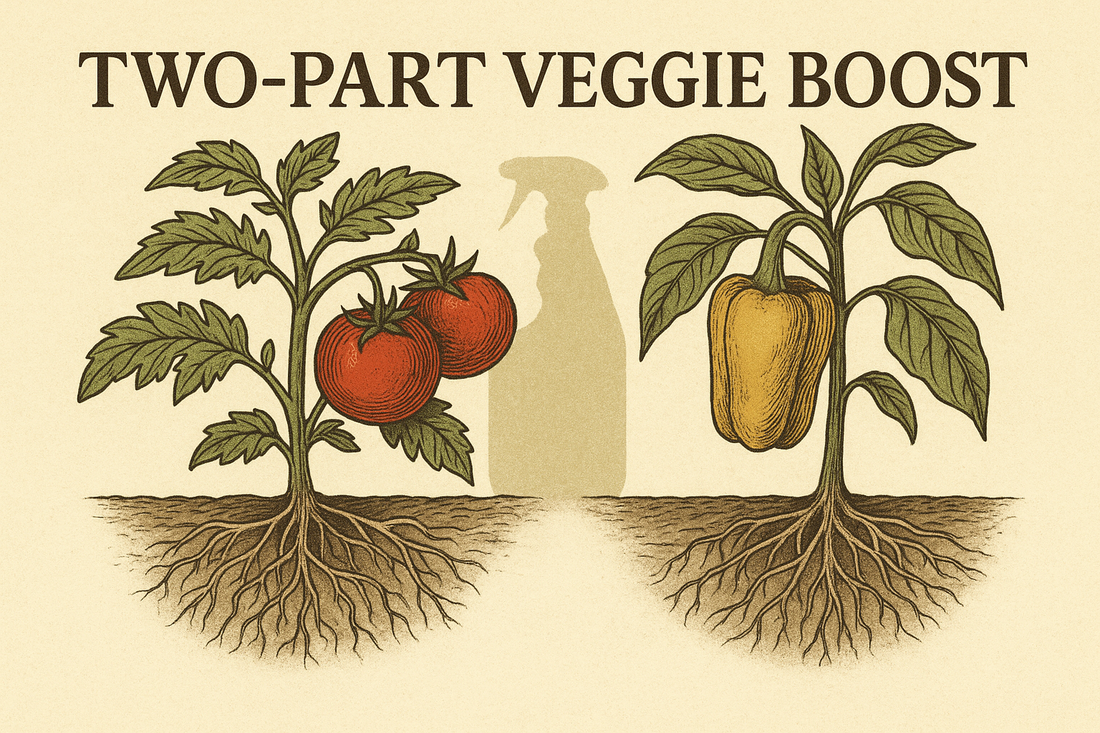
Grow Bigger and Better Vegetables: A Two-Part Feeding Plan
Why a split program works
Vegetables pull large quantities of nitrogen and potassium as they race from flower to fruit. At the same time, trace elements like zinc and manganese run low but rarely show clear early symptoms. A two-product routine covers both needs without pushing excess salt into the soil.
Step 1 - Build the foundation
Apply High Yield 2-0-4 when the first flower buds appear. The fish-based nitrogen keeps new leaves thick yet avoids tip burn, and the potassium supports cell expansion inside fruit walls.
Mix rate: 2 tablespoons per gallon of water. Soak the root zone every other weekend.
Step 2 - Deliver missing micros
Seven to ten days later follow with Octane Boost 4-0-2. Its chelated manganese, zinc, and boron absorb quickly so pollen holds, seeds set, and flavor compounds develop.
Mix rate: 1 tablespoon per gallon. Drench soil or spray foliage in the cool of early morning.
What to look for after four weeks
- Blossom drop slows and fruit count rises.
- Individual tomatoes or peppers gain noticeable weight.
- Skin color deepens rather than staying pale green.
- New leaves maintain full size instead of shrinking after the first cluster.
Mixing schedule at a glance
| Week | Product | Goal |
|---|---|---|
| 1 | High Yield | Build foliage and root capacity |
| 2 | Octane Boost | Supply trace elements for flower set |
| 3 | High Yield | Keep energy flowing to swelling fruit |
| 4 | Octane Boost | Prevent late-season micro shortages |
Repeat the four-week block until nighttime temperatures fall below 60 °F.
Myth to skip
“A high-phosphorus bloom booster is the only path to heavy harvests.”
Most garden soils already contain ample phosphorus. Adding more can tie up iron and zinc, leading to pale leaves and hollow fruit. Balanced macros plus bio-available micros produce stronger results with less risk.
Hold this schedule for one month and measure the difference in both yield and taste. Vegetables get the steady fuel they crave, trace minerals arrive exactly when fruit forms, and you avoid last-minute guesswork during peak season.
